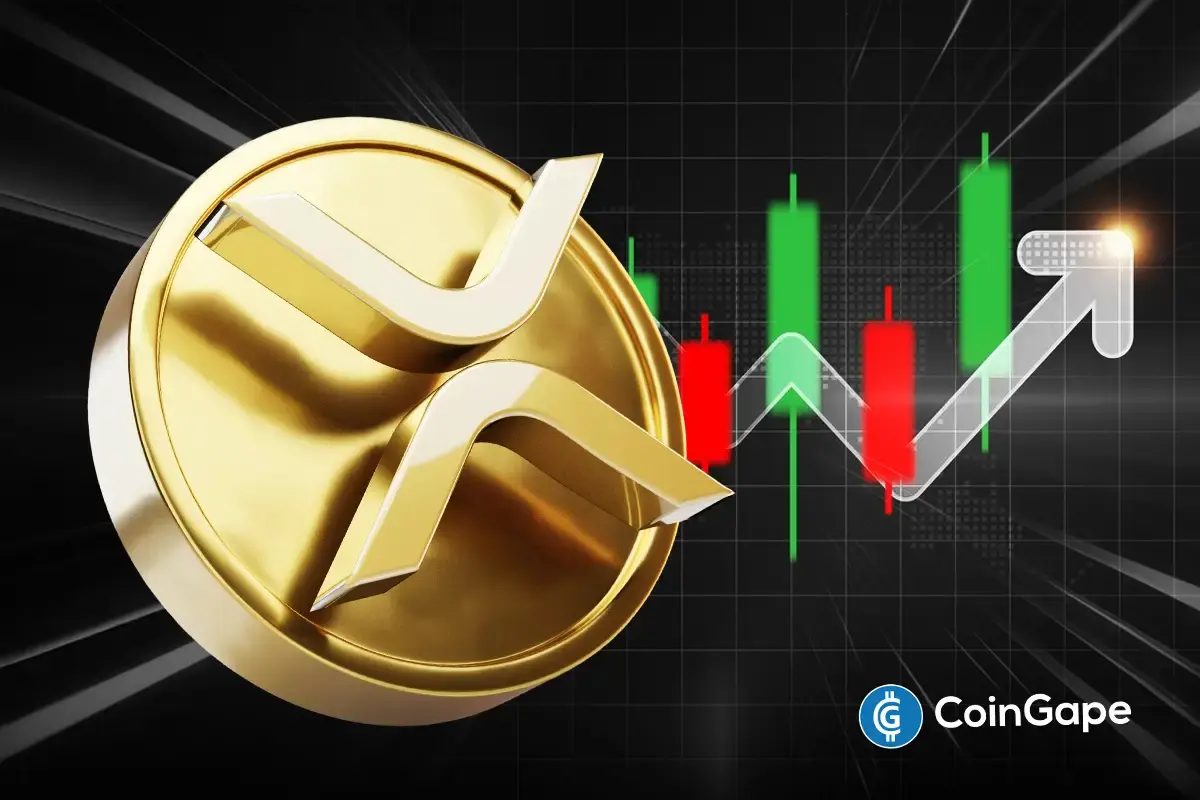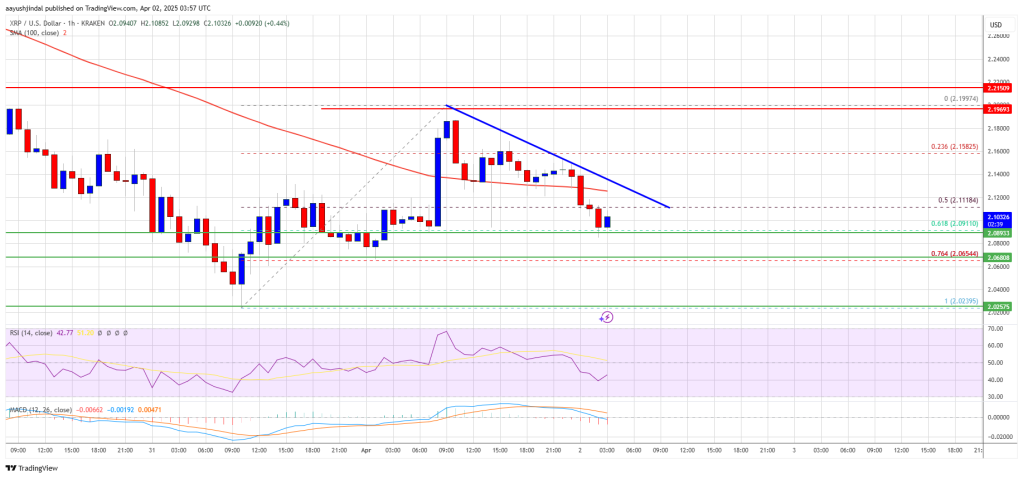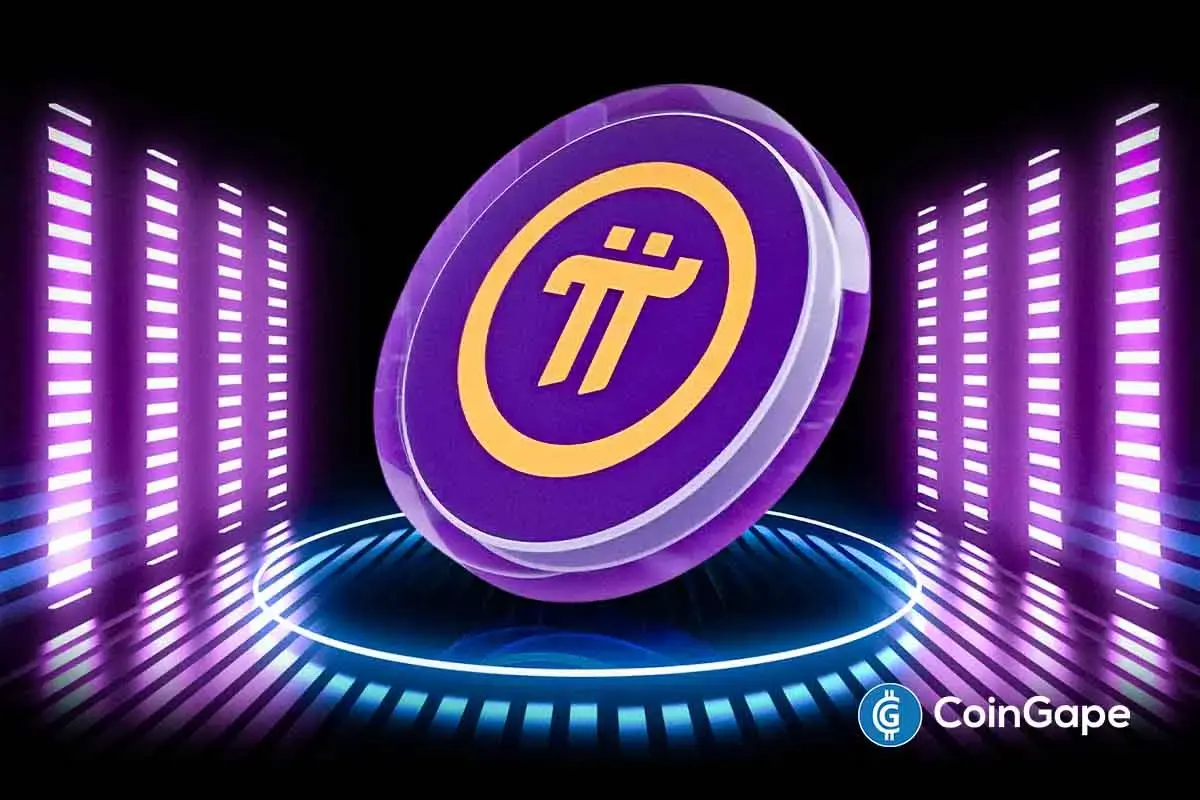Market
Federal and SEC Impact on Crypto Industry Examined


The interplay between federal monetary policies and regulatory decisions by the US Securities and Exchange Commission (SEC) continues to shape the cryptocurrency industry. As experts delve into the nuances of these impacts, significant shifts are observed in both market dynamics and institutional strategies.
Michael Saylor of MicroStrategy and Arthur Hayes, co-founder of BitMEX, provide insights into the potential impact on major cryptocurrencies such as Bitcoin (BTC) and Ethereum (ETH).
Future Predictions for the Crypto Market From Industry Titans
Michael Saylor, executive chairman and co-founder of MicroStrategy, projects a pivotal summer for the cryptocurrency sector. According to Saylor, the SEC will likely classify Ethereum as security.
Consequently, the commission will potentially deny the spot Ethereum ETF applications from several asset managers, including BlackRock. These predictions were shared during his presentation at the MicroStrategy World 2024 conference.
Saylor extends his forecast to other prominent cryptocurrencies such as BNB, Solana (SOL), XRP, and Cardano (ADA). He suggests they, too, will receive similar designations as unregistered securities. Saylor asserts that only Bitcoin (BTC) enjoys full institutional acceptance, epitomized as the “one universal” institutional-grade asset.
“None of them will be wrapped by a spot ETF, none of them will ever be accepted by Wall Street,” Saylor stated,
Read more: Ethereum ETF Explained: What It Is and How It Works
Meanwhile, the market’s anticipation for the SEC’s decision on spot Ethereum ETFs has dramatically shifted. Eric Balchunas, senior ETF analyst at Bloomberg Intelligence, said that the “odds of ETH ETF approval by May deadline are down to 35%.”
The pessimism also comes from the issuers themselves. Earlier in April, Jan van Eck, the founder and CEO of asset manager VanEck, shared skepticism regarding the SEC’s likelihood of approving spot Ethereum ETFs. His thoughts are noteworthy as his company and 21Shares are among the asset managers eagerly awaiting Ethereum ETF approval at the end of this month.
The situation is becoming more complex due to the ongoing legal battles between the SEC and Ethereum-based projects such as Uniswap and Consensys—MetaMask’s parent company. BeInCrypto reported that the SEC issued a Wells notice for those two companies.
Consensys filed a lawsuit against the SEC after receiving the notice. The lawsuit’s outcome will be crucial for companies dealing with ETH and related products.
How Federal Policies Influence Crypto Stability and Growth
As regulatory waters are navigated, the broader economic policies of the US Federal Reserve also play a crucial role in determining the liquidity and viability of cryptocurrencies. Arthur Hayes, co-founder of BitMEX, explores the effects of the Federal Reserve’s recent decision to slow its balance sheet reduction pace.
This action effectively introduces $35 billion monthly into the economy.
Concurrently, the Treasury’s issuance of additional short-term Treasury bills aims to bolster liquidity. This effort is further impacted by the Federal Deposit Insurance Corporation’s (FDIC) maneuvers to insure deposits after the collapse of Republic First Bank. These moves collectively seek to stabilize the financial environment by adding significant contingent liabilities to the system.
Hayes interprets these actions as likely to alleviate some financial pressures on cryptocurrencies, predicting a stabilization and gradual increase in Bitcoin prices. He foresees it to consolidate in the $60,000 to $70,000 range by August.
“While I don’t expect crypto to fully realize the recent US monetary announcements’ inflationary nature immediately, I expect prices to bottom, chop, and begin a slow grind higher,” Hayes wrote.
Read more: How to Protect Yourself From Inflation Using Cryptocurrency
Bitcoin’s price has plummeted for the past few days, reaching a low of $56,000. However, at the time of writing, Bitcoin has recovered. It is now trading at $59,345, representing an increase of 2.57% for the last 24 hours.
The crypto industry is currently at a crucial point with the ever-changing regulatory and monetary landscapes. The insights from Saylor and Hayes highlight the complex interdependencies and the potential for both challenges and opportunities ahead. Understanding these dynamics is essential for stakeholders aiming to navigate the uncertainties of this volatile market.
Disclaimer
In adherence to the Trust Project guidelines, BeInCrypto is committed to unbiased, transparent reporting. This news article aims to provide accurate, timely information. However, readers are advised to verify facts independently and consult with a professional before making any decisions based on this content. Please note that our Terms and Conditions, Privacy Policy, and Disclaimers have been updated.
Market
VanEck Sets Stage for BNB ETF with Official Trust Filing

Global investment management firm VanEck has officially registered a statutory trust in Delaware for Binance’s BNB (BNB) exchange-traded fund (ETF).
This move marks the first attempt to launch a spot BNB ETF in the United States. It could potentially open new avenues for institutional and retail investors to gain exposure to the asset through a regulated investment vehicle.
VanEck Moves Forward with BNB ETF
The trust was registered on March 31 under the name “VanEck BNB ETF” with filing number 10148820. It was recorded on Delaware’s official state website.

The proposed BNB ETF would track the price of BNB. It is the native cryptocurrency of the BNB Chain ecosystem, developed by the cryptocurrency exchange Binance.
As per the latest data, BNB ranks as the fifth-largest cryptocurrency by market capitalization at $87.1 billion. Despite its significant market position, both BNB’s price and the broader cryptocurrency market have faced some challenges recently.
Over the past month, the altcoin’s value has declined 2.2%. At the time of writing, BNB was trading at $598. This represented a 1.7% dip in the last 24 hours, according to data from BeInCrypto.

While the trust filing hasn’t yet led to a price uptick, the community remains optimistic about the prospects of BNB, especially with this new development.
“Send BNB to the moon now,” an analyst posted on X (formerly Twitter).
The filing comes just weeks after VanEck made a similar move for Avalanche (AVAX). On March 10, VanEck registered a trust for an AVAX-focused ETF.
This was quickly followed by the filing of an S-1 registration statement with the US Securities and Exchange Commission (SEC). Given this precedent, a similar S-1 filing for a BNB ETF could follow soon.
“A big step toward bringing BNB to US institutional investors!” another analyst wrote.
Meanwhile, the industry has seen an influx of crypto fund applications at the SEC following the election of a pro-crypto administration. In fact, a recent survey revealed that 71% of ETF investors are bullish on crypto and plan to increase their allocations to cryptocurrency ETFs in the next 12 months.
“Three-quarters of allocators expect to increase their investment in cryptocurrency-focused ETFs over the next 12 months, with demand highest in Asia (80%), and the US (76%), in contrast to Europe (59%),” the survey revealed.
This growing interest in crypto ETFs could drive further demand for assets like BNB, making the VanEck BNB ETF a potentially significant product in the market.
Disclaimer
In adherence to the Trust Project guidelines, BeInCrypto is committed to unbiased, transparent reporting. This news article aims to provide accurate, timely information. However, readers are advised to verify facts independently and consult with a professional before making any decisions based on this content. Please note that our Terms and Conditions, Privacy Policy, and Disclaimers have been updated.
Market
XRP Recovery Stalls—Are Bears Still In Control?

XRP price started a fresh decline from the $2.20 zone. The price is now consolidating and might face hurdles near the $2.120 level.
- XRP price started a fresh decline after it failed to clear the $2.20 resistance zone.
- The price is now trading below $2.150 and the 100-hourly Simple Moving Average.
- There is a connecting bearish trend line forming with resistance at $2.120 on the hourly chart of the XRP/USD pair (data source from Kraken).
- The pair might extend losses if it fails to clear the $2.20 resistance zone.
XRP Price Faces Rejection
XRP price failed to continue higher above the $2.20 resistance zone and reacted to the downside, like Bitcoin and Ethereum. The price declined below the $2.150 and $2.120 levels.
The bears were able to push the price below the 50% Fib retracement level of the recovery wave from the $2.023 swing low to the $2.199 high. There is also a connecting bearish trend line forming with resistance at $2.120 on the hourly chart of the XRP/USD pair.
The price is now trading below $2.150 and the 100-hourly Simple Moving Average. However, the bulls are now active near the $2.10 support level. They are protecting the 61.8% Fib retracement level of the recovery wave from the $2.023 swing low to the $2.199 high.
On the upside, the price might face resistance near the $2.120 level and the trend line zone. The first major resistance is near the $2.150 level. The next resistance is $2.20. A clear move above the $2.20 resistance might send the price toward the $2.240 resistance. Any more gains might send the price toward the $2.2650 resistance or even $2.2880 in the near term. The next major hurdle for the bulls might be $2.320.
Another Decline?
If XRP fails to clear the $2.150 resistance zone, it could start another decline. Initial support on the downside is near the $2.10 level. The next major support is near the $2.0650 level.
If there is a downside break and a close below the $2.0650 level, the price might continue to decline toward the $2.020 support. The next major support sits near the $2.00 zone.
Technical Indicators
Hourly MACD – The MACD for XRP/USD is now gaining pace in the bearish zone.
Hourly RSI (Relative Strength Index) – The RSI for XRP/USD is now below the 50 level.
Major Support Levels – $2.10 and $2.050.
Major Resistance Levels – $2.120 and $2.20.
Market
Experts Raise Red Flags Over Finances

Circle’s initial public offering (IPO) filing has raised concerns among industry experts, who are sounding alarms over the company’s financial health, distribution costs, and valuation.
While the move marks a significant step toward mainstream financial integration, experts’ skepticism casts doubt on the company’s long-term prospects.
Analysts Highlight Red Flags With Circle IPO
On April 1, BeInCrypto reported that Circle had filed for an IPO. The company plans to list its Class A common stock on the New York Stock Exchange (NYSE) under “CRCL.”
Circle’s IPO filing reveals revenue of $1.67 billion in 2024, a notable increase from previous years. However, a closer examination of the company’s financials has uncovered some challenges.
Matthew Sigel, Head of Digital Assets Research at VanEck, noted that revenue increased 16% year over year. Yet, at the same time, the company reported a 29% decrease in EBITDA year over year, indicating a decline in operational profitability. Additionally, net income fell by 42%, reflecting a significant drop in overall profitability.
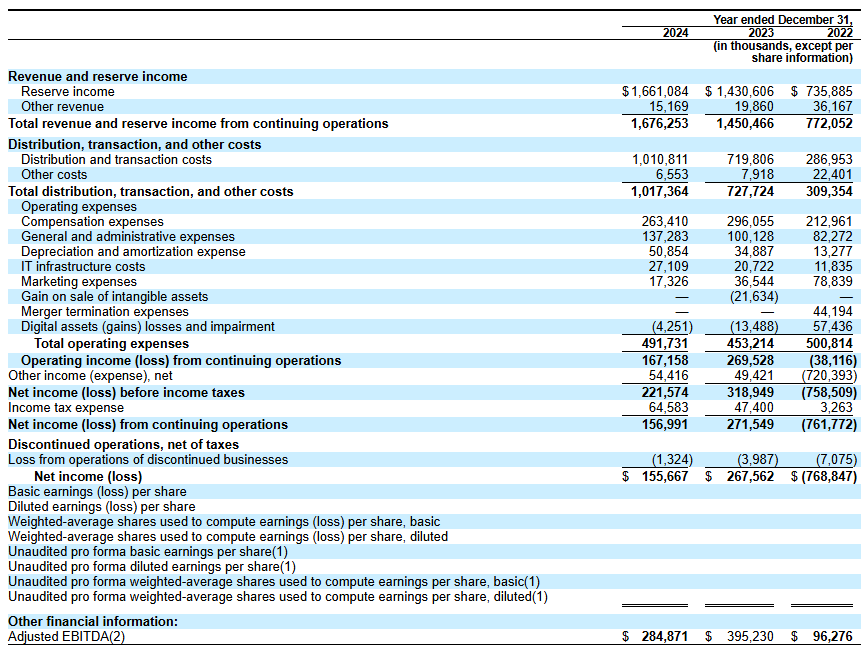
Sigel pointed out four factors contributing to the decline in these financial metrics. He explained that the company’s rapid expansion and new service integrations negatively impacted net income.
Furthermore, the discontinuation of services like Circle Yield reduced other revenue streams. This, in turn, exacerbated the decline in profitability.
“Costs related to restructuring, legal settlements, and acquisition-related expenses also played a role in the decline in EBITDA and net income, despite overall revenue growth,” Sigel added.
Importantly, he focused on Circle’s increased distribution and transaction costs. Sigel revealed that the cost rose due to higher fees paid to partners like Coinbase and Binance.
A related post by Farside Investors on X (formerly Twitter) shed further light on these expenses.
“In 2024, the company spent over $1 billion on “distribution and transaction costs,” probably much higher than Tether as a % of revenue,” the post read.
This prompts speculation that Circle may be overspending to maintain its market share in the competitive stablecoin sector. The company’s historical performance further fuels skepticism.
Farside Investors added that in 2022, Circle recorded a staggering $720 million loss. Notably, the year was marked by significant turmoil in the crypto industry, including the high-profile collapses of FTX and Three Arrows Capital (3AC).
This suggests that Circle may be vulnerable to market shocks. Thus, it calls into question the company’s risk management capabilities—especially in the inherently volatile crypto market.
“The gross creation and redemption numbers are a lot higher than we would have thought for USDC. Gross creations in a year are many multiples higher than the outstanding balance,” Farside Investors remarked.
In addition, analyst Omar expressed doubts about Circle’s $5 billion valuation.
“Nothing to love in the Circle IPO filing and no idea how it prices at $5 billion,” he questioned.
He drew attention to several concerns, including the company’s gross margins being severely impacted by high distribution costs. The analyst also pointed out that the deregulation of the US market is poised to disrupt Circle’s position.
Additionally, Omar stressed that Circle spends over $250 million annually on compensation and another $140 million on general and administrative costs, raising questions about its financial efficiency. He also noted that interest rates—core income drivers for Circle—will likely decline, presenting additional challenges.
“32x ’24 earnings for a business that just lost its mini-monopoly and facing several headwinds is expensive when growth structurally challenged,” Omar said.
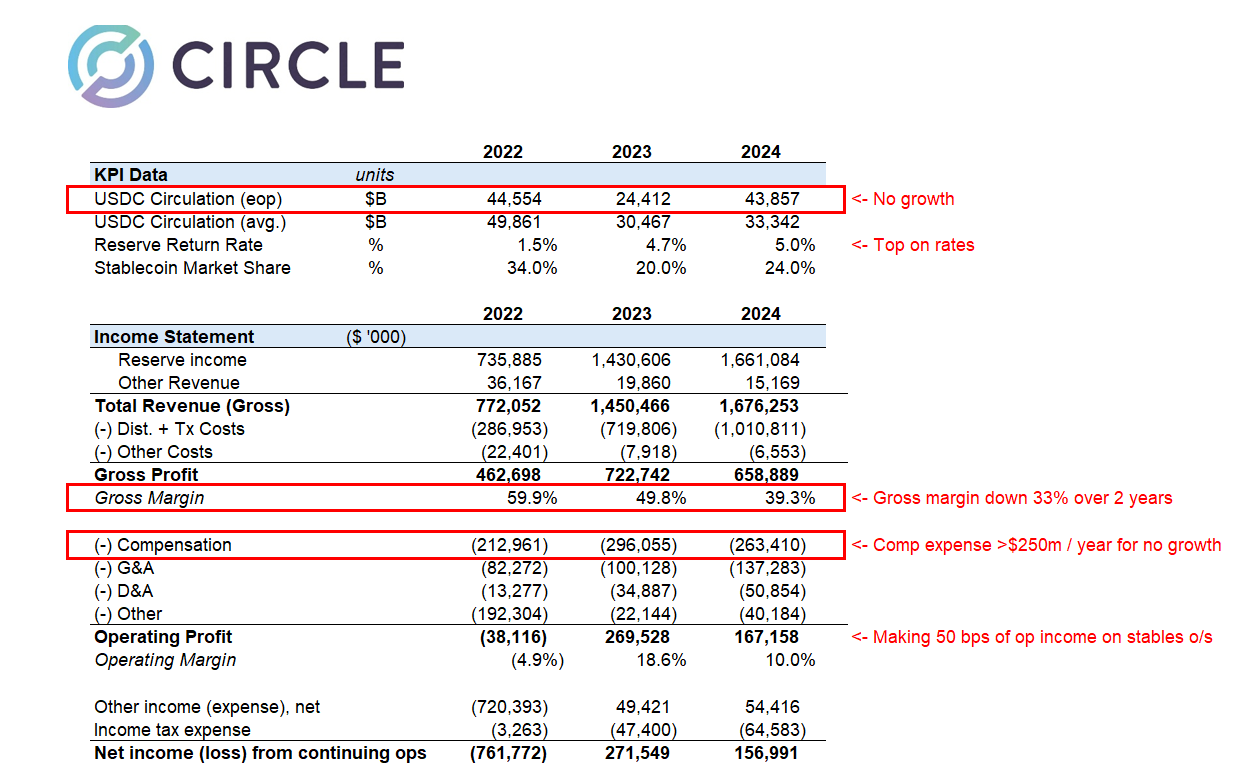
Ultimately, the analyst concluded that the IPO filing was a desperate attempt to secure liquidity before facing serious market difficulties.
Meanwhile, Wyatt Lonergan, General Partner at VanEck, shared his predictions for Circle’s IPO, outlining four potential scenarios. In the base case, he forecasted that Circle would capitalize on the stablecoin narrative and secure key partnerships to drive growth.
In a bear case, Lonergan speculated that poor market conditions might lead to a Coinbase buyout.
“Circle IPOs, the market continues to tank, Circle stock goes with it. Poor business fundamentals cited. Coinbase swoops in to buy at a discount to the IPO price. USDC is all theirs at long last. Coinbase acquires Circle for something close to the IPO price, and they never go public,” Lonergan claimed.
Lastly, he outlined a probable scenario where Ripple bids up Circle’s valuation to a staggering $15 to $20 billion and acquires the company.
Disclaimer
In adherence to the Trust Project guidelines, BeInCrypto is committed to unbiased, transparent reporting. This news article aims to provide accurate, timely information. However, readers are advised to verify facts independently and consult with a professional before making any decisions based on this content. Please note that our Terms and Conditions, Privacy Policy, and Disclaimers have been updated.
-

 Market23 hours ago
Market23 hours agoBitcoin Price Battles Key Hurdles—Is a Breakout Still Possible?
-

 Bitcoin21 hours ago
Bitcoin21 hours ago$500 Trillion Bitcoin? Saylor’s Bold Prediction Shakes the Market!
-
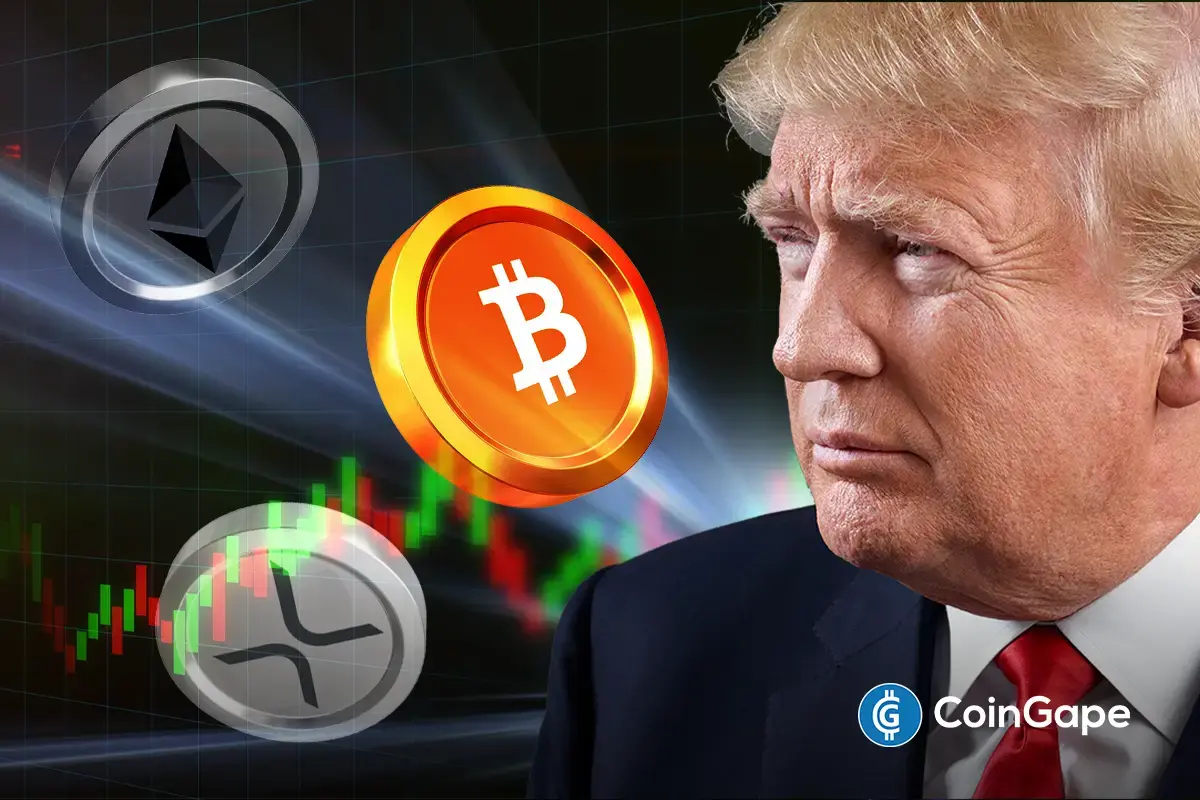
 Altcoin19 hours ago
Altcoin19 hours agoWill XRP, SOL, ADA Make the List?
-

 Bitcoin22 hours ago
Bitcoin22 hours agoBig Bitcoin Buy Coming? Saylor Drops a Hint as Strategy Shifts
-

 Market20 hours ago
Market20 hours agoCoinbase Stock Plunges 30% in Worst Quarter Since FTX Collapse
-

 Market18 hours ago
Market18 hours agoTrump’s USD1 Stablecoin Eyes Trust Recovery in Crypto
-

 Altcoin18 hours ago
Altcoin18 hours agoBTC, ETH, XRP, DOGE Fall Following Weak PMI, JOLTS Data
-

 Altcoin17 hours ago
Altcoin17 hours agoBinance Update Sparks 50% Decline For Solana Meme Coin ACT: Details



